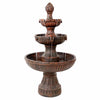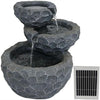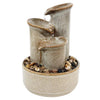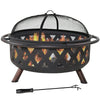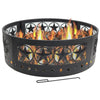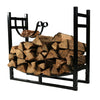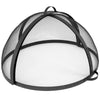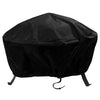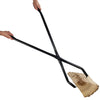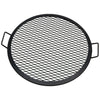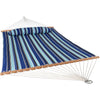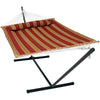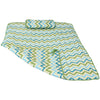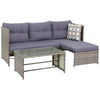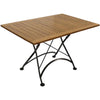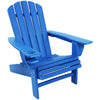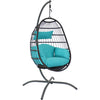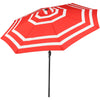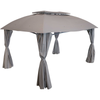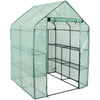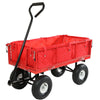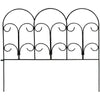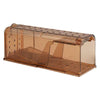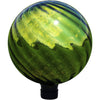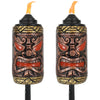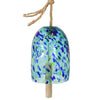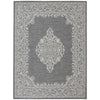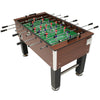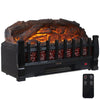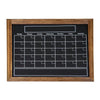Adirondack chairs feature a staple, classic design and are spread out across the country: they’re proudly displayed on front porches, patios, yards, and campsites out at the lake or overlooking mountains to portray weekends of relaxation and outdoor fun with loved ones. Completely recognizable, even if you don’t know the official “Adirondack” name, you’ll know one when you see one. However, with their sloped, original design and typical, hard-surfaced material construction, you may be wondering if these chairs are actually as comfortable as they seem – especially for your back. The answer is a little more complicated than you may think, rooted in historical significance and dependent upon the person looking to take a nice seat. Let’s take a brisk trip to the 19th century and channel the frantic energy of a pandemic spreading across America (tuberculosis) before bringing our attention “back” to modern pros and cons of Adirondack chairs
Simple History of the Adirondack Chair
Early 19th century America was facing a pandemic much larger than we are acquainted to with tuberculosis killing 1 in 7 on a global scale. Tuberculosis grew stronger as field workers moved to booming cities looking for work, being highly contagious. But, “the cure” that people fanaticized over happened to be good-old-fashioned fresh air – literally. One man, Marc Cook, escaped New York City infected with the disease and went into the mountains where he found himself recovered. The Adirondack Mountains of Upstate New York had the healing prowess the people needed.
So of course, the next logical conclusion is to create the perfect chair to sit outside and let the magic (or rather, the coldness and dryness of the mountains) in the air flow through you. Thomas Lee began drafting chairs that were the perfect, aerodynamic shape and slope to enjoy Lake Champlain’s horizon with more comfort than ever. In Westport, New York, the chair was first dubbed the Westport chair by Lee. But, in (friendly and definitely legal) collaboration with Harry C. Bunnell, a slightly different draft of the Adirondack chair was coming to fruition in the public scene. This early chair features wide armrests, a single, wide plank backing, and an angled seat. Actually, early renditions look similar to this chair:

Later renditions of the “cure chair” feature a slanted back with high armrests to open the sitter’s chest when relaxed, reminiscent of our favorite outdoor chair today.
Since the 1930s, the Adirondack chair was marketed not just as a cure but as a great chair for relaxing outdoors in general – and a great chair for naps. This updated version of the Adirondack chair features a fan-shaped back and slats that we know and love today. Overall, the chair has been updated and redrafted for years, making its definitive history hard to pin down. However, the main point that remains is the mountainous, outdoor spirit that the Adirondack chair characterizes in hopes of relaxing in peace with the wilderness horizons.
Why Adirondack Chairs Are Actually Good For Your Back
With all of its history and revisions, the Adirondack chair is sure to be the perfect image of relaxation and outdoor comfort, right? Well, what if it’s all a sham? Here’s why the Adirondack chair is actually good for you and your back:
Easy, Unique Composition
Adirondack chairs are original in their design with slanted seat backing. The low seat allows you to easily back into the chair without putting extra pressure on your knees and lower back. Unlike upright chairs and folded, fabric camping chairs that sit upright, Adirondack chairs allow you to sit back, and comfortably rest your back and neck. With wide construction and tall, wide armrests, it is easy to get comfy with a pet or a little one while using the armrests as a resting spot for you or your drinks on hot, summer days. The natural, upward angle of the seat allows for pressure to easily be lifted off of your ankles, feet, and knees, helping with blood flow. Lastly, Adirondack chairs are good for your back because of the curved backing design with the planked materials that slightly curve to your natural back shaping.
So, they aren’t bad for your back at all! But, Adirondack chairs still aren’t that comfortable for all that they’re presented to be (a complete and total symbol of carefree living anywhere). Here’s how to make your Adirondack chair experience better than ever before (Lee and Bunnell, patent this).
How to Make an Adirondack Chair More Comfortable
Know Your Own Comfort Capabilities
Most elderly and other older individuals tend to have pre-existing pain in their neck, back, or joints which can reduce their comfort in an Adirondack chair. These conditions can become aggravated by the hard frame of an Adirondack chair without cushions or when sitting for a long period of time. Similarly, if you’re petite or extra tall, know which chairs fit you best. Adirondack chairs can be comfortable for most, but the sloping seat may be uncomfortable for longer legs, or you may not be able to relax if you have to sit back farther than expected.
Know your own comfort capabilities so you can choose a chair that is supportive and works best for your age, conditions, and body type.
Straighten Out
The straight backing of the Adirondack chair is slanted so you can easily lean back to relax. However, in conversation and high-energy gatherings, you may be leaning forward or slouching more than not. In an Adirondack chair, stay comfortable by straightening your posture as much as you can, no matter the angle.
Avoid Long Outings
Sitting in a wooden or other hard material chair with no cushions can aggravate neck, back, and joint pain. Easily take breaks, get up and move around a bit, and then lay back to stay more comfortable, longer.
Switch Up the Context
Get crafty: a huge improvement to the Adirondack chair, for style and comfort, is upgrading the look by adding your own cushions. Whether you gather seat cushions, back cushions, or throw pillows, this wide seat is sure to invite comfort with extra plush context. Add a pop of color to your chair or get cushions to match your outdoor aesthetic as well!
Try a different style: nowadays, Adirondack chairs are offered in a variety of different styles, including swivel designs, upright seats, rocking chair designs, and more. The swivel allows you to easily lay back while also keeping up with casual conversation surrounding you. The upright seat Adirondack chairs are great for when you need more of a raised seat. The rocking design is wonderful to relieve joint pain while swaying in the wind. Even get foldable Adirondack chairs to easily take this relaxing element anywhere you like. Explore your options of this classic Adirondack chair and easily relax comfortably.
Add more: get a matching ottoman to add comfort to your feet and relieve pressure from your knees. Ottomans come in many different sizes and color options so you can match your outdoor aesthetic effortlessly or mix and match your Adirondack styles.
Change the environment: Adirondack chairs are great for all contexts, including on the dock, on the patio, in the backyard, and even around a campfire. Place Adirondack chairs around a warm fire pit in any backyard or campsite location and relieve your muscle tensions easily with the heat of the fire. These chairs are perfect for large events, all gathering together cozily.
Featured on watercolor postcards across the country, labeled as a luxury for relaxation and carefree living, scattered all over on porches, patios, campsites, beaches, and more, Adirondack chairs have come a long way from “curing” tuberculosis in the 19th century. Inspired by the Adirondack Mountains of Upstate New York, Adirondack chairs are here to stay and can be upgraded on the comfort front in many simple ways. These chairs are a great way to uplift your aesthetic, to bring a piece of the Adirondack Mountains to your outdoor space, and to relax effortlessly with friends and family. And don’t forget, they actually are good for your back!
